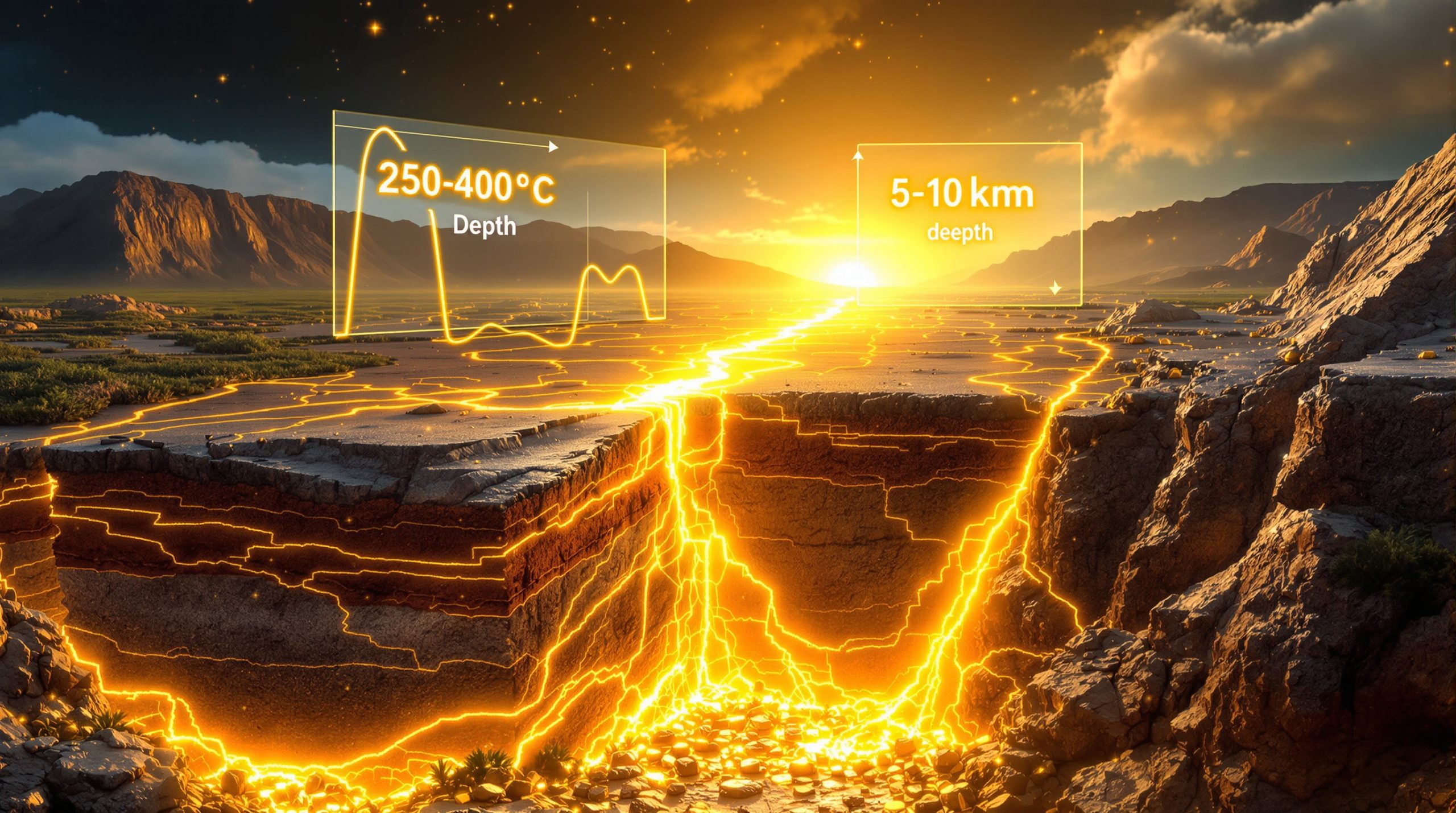What is Russia's Lithium Carbonate Production Target for 2030?
Russia lithium carbonate production 2030 is a strategic focus, as the Natural Resources Ministry has set an ambitious target to produce at least 60,000 tonnes of lithium carbonate annually by 2030. This move, directed by President Vladimir Putin, aims to transform Russia into a major global supplier of this critical mineral.
Achieving such an ambitious target represents a drastic shift. Consequently, it requires an innovative lithium approach to overhaul extraction and processing methods across the country. Furthermore, this commitment comes amid growing international competition and technology demands.
How Does Russia's Current Lithium Production Compare to Future Goals?
As of 2023, Russia produced a mere 27 tonnes of lithium from the Malyshevsky emerald mine in the Ural Mountains. This production is less than 0.05% of the 2030 target. In addition, such a significant gap underscores the scale of investment and development required.
Industry experts caution that Russia lithium carbonate production 2030 will need an extraordinary 2,222-fold increase. Consequently, scaling up the current infrastructure and developing new facilities are imperative for success. Reports suggest that technological challenges are the primary barrier to realising these plans.
According to leading analysts, incorporating advanced processing techniques may help overcome these challenges. For instance, Russia might collaborate with international experts while ensuring its domestic resources remain a priority. In this context, the country’s production initiative is closely monitored worldwide.
Where Are Russia's Key Lithium Deposits Located?
Russia has granted exploration licences for three major lithium deposits that will underpin its 2030 strategy. Firstly, the Kolmozerskoye deposit in the Murmansk region contains roughly 25% of the country’s known lithium reserves. The high-grade spodumene ore, averaging 1.1% lithium concentration, is highly competitive globally. However, its Arctic location poses logistical challenges due to extreme weather and sparse infrastructure.
Moreover, the Polmostundrovskoye deposit, also in Murmansk, offers lower-grade ore but benefits from established transportation links. Geological surveys indicate the presence of tantalum and niobium alongside lithium. This multi-mineral potential may improve extraction economics, consequently enhancing overall viability.
Additionally, the Tastygskoye deposit in the Tuva region, near Mongolia, stands as Russia’s eastern hub for lithium. Initial findings suggest it contains lithium-bearing pegmatites with grades of 0.6–0.8% Li₂O. Despite requiring more intensive processing, the deposit remains economically attractive at scale. This strategic location could support domestic supply chains.
Who Are the Key Players in Russia's Lithium Industry?
The development of Russia’s lithium resources involves a mix of state-owned and private firms. Polar Lithium, a joint venture between Nornickel and Rosatom, is one of the principal players. Its licence for the Kolmozerskoye deposit has attracted over 37 billion rubles ($420 million) in investment. Such partnerships underline the importance of a major lithium expansion strategy in the country.
In addition, Arctic Lithium—a private enterprise with close ties to influential investors—holds the licence for the Polmostundrovskoye deposit. The company has secured preferential financing from state-backed banks, which is crucial for quick development. Its management, with experience in navigating strict mining regulations, is expected to play a key role in the sector’s growth.
Furthermore, Elbrusmetall-Lithium, a subsidiary of the state defence firm Rostech, manages the Tastygskoye project. This involvement highlights the strategic priority given to military applications of lithium. Overall, these partnerships blend state control with private capital, ensuring a multi-faceted approach to achieving Russia lithium carbonate production 2030.
How Large Are Russia's Lithium Reserves?
Russia’s lithium resources remain significant yet modest on the world stage. According to the US Geological Survey, the country ranks 14th globally with about 1 million tonnes of lithium reserves as of 2024 estimates. In addition, these figures are dwarfed by leading producers such as Chile, Australia, and Argentina.
Further geological surveys estimate Russia’s lithium oxide (Li₂O) reserves at roughly 3.5 million tonnes. Converting Li₂O to elemental lithium requires multiplying by 0.465, which is critical for assessing actual resource size. Moreover, the quality of deposits varies by region. For instance, deposits in the northwest yield spodumene with lithium concentrations between 0.7% and 1.4%, comparable with Australian standards.
Experts also note that significant opportunities likely exist in Eastern Siberia and the Far East. In addition, over 20 potential lithium-bearing areas have been identified but remain underexplored. This underlines the possibility that Russia's actual resource base could be far larger than current estimates suggest.
Why Is Russia Prioritising Lithium Production?
Russia’s growing interest in lithium production is driven by several strategic factors. In addition, import dependence posed challenges to its technology and defence sectors. Prior to 2022, Russia imported nearly 100% of its lithium compounds, mainly from Chile and Argentina. Consequently, reducing reliance on external sources has become a national imperative.
Furthermore, Western sanctions following Russia’s actions in Ukraine have restricted access to high-tech components. In addition, the need to support domestic production for military and civilian applications has grown more pressing. These pressures have spurred concerted efforts towards achieving self-sufficiency in critical minerals like lithium.
Moreover, global shifts towards electric vehicles and renewable energy are reshaping supply chains. As countries strive to secure sustainable energy sources, Russia lithium carbonate production 2030 is seen as a linchpin for establishing domestic battery manufacturing capabilities. This focus will help diversify the economy and reinforce national security.
President Putin has personally urged the acceleration of lithium project approvals and incentivisation measures. In addition, state agencies are streamlining permitting processes and tax benefits for strategically important projects. Such measures reinforce Russia's commitment to achieving its 2030 production target amid challenging global dynamics.
How Does Russia's Lithium Strategy Fit into Global Critical Minerals Competition?
Russia’s lithium strategy must be viewed within a broader context of global critical minerals competition. The transformation of lithium from a niche resource to a strategic commodity has led to price volatility, with prices rising over 400% between 2020 and 2022. In addition, nations are fiercely competing to secure stable supplies.
China currently dominates lithium processing, controlling approximately 60% of refining capacity worldwide. In contrast, Russia is determined to reduce its dependence on Chinese technology while still potentially leveraging expertise where necessary. Consequently, Russia is also looking to establish alliances based on mutual strategic interests.
The United States has formed initiatives such as the Minerals Security Partnership to counter China’s dominance. In addition, European manufacturers are exploring alternative sources to mitigate dependency. Thus, engaging in the global minerals race is essential for Russia as it strives to secure its long-term production goals.
For further details on international perspectives, one can review insights from Reuters on such strategies, which summarise challenges and prospects in the sector. This external perspective provides valuable context to Russia's plans.
What Are the Technical Aspects of Lithium Production?
Understanding the technical challenges is crucial to assessing whether Russia lithium carbonate production 2030 can be achieved. Russia’s lithium is primarily found in hard-rock spodumene deposits rather than in brines. Consequently, the extraction process is more energy intensive and requires several stages, including crushing, flotation, calcination, acid leaching, and purification.
Each processing step contributes to the overall energy demand. For example, it is estimated that between 5-7 MWh of electricity is needed per tonne of lithium carbonate produced. In addition, specialised infrastructure is required for year-round production in harsh Arctic conditions. These technical complexities add further strain to achieving the ambitious 2030 timeline.
Water usage also poses challenges, especially in arid regions like Tuva. Modern technologies focused on recycling water will be essential. Moreover, overcoming these technical hurdles may require importing cutting-edge technology, as noted by industry analysts who point to russia's production plan as a crucial step in meeting future demand.
FAQs About Russia's Lithium Production Plans
What is driving Russia's interest in lithium production?
Russia aims to reduce reliance on imports, mitigate the impact of Western sanctions, and enable domestic production capabilities for high-capacity batteries in both civilian and military sectors. This strategic focus is particularly important for national security in an increasingly competitive geopolitical landscape.
How much lithium does Russia currently produce?
Currently, Russia produces only 27 tonnes of lithium, a by-product of the Malyshevsky emerald mine operations. This low production level emphasises the need for a massive scale-up to reach the 60,000-tonne target by 2030, making the strategy one of the most transformative projects in recent years.
Which companies are involved in Russia's lithium industry?
Key players include Polar Lithium, Arctic Lithium, and Elbrusmetall-Lithium. These firms combine state backing with private investment, ensuring that strategic interests and technical expertise are aligned to support Russia lithium carbonate production 2030.
How do Russia's lithium reserves compare globally?
Russia is ranked 14th in global lithium reserves with around 1 million tonnes. While this is modest compared with leading producers such as Chile, Australia, and Argentina, there remains considerable potential for undiscovered resources in remote areas.
When will Russia's new lithium facilities be operational?
All three major mining projects are slated to be operational by 2030. Initial production at the Kolmozerskoye deposit is targeted for 2027, with subsequent facilities at Polmostundrovskoye and Tastygskoye expected to begin between 2028 and 2029. This aggressive timeline reflects Russia's resolve amid global competition.
In summary, the ambitious production target for Russia lithium carbonate production 2030 underscores not only Russia’s desire for self-sufficiency but also its broader strategy in the global critical minerals race. Moving forward, continued investments in technology and infrastructure will be critical for realising this vision.
Curious about significant mineral discoveries before the market reacts?
Discovery Alert's proprietary Discovery IQ model delivers real-time alerts on significant ASX mineral discoveries, instantly empowering you to identify actionable opportunities ahead of the broader market. Explore how major mineral discoveries can lead to substantial returns by visiting the Discovery Alert discoveries page.




